
Nothing quite like standing at the edge of something vast—wind in your face, sun warming your shoulders—feeling small in the best way possible. But too often, those experiences come with stairs, rocky trails, or barriers that leave people behind.
The truth is, breathtaking doesn’t have to mean inaccessible. Across the U.S., there are trails and viewpoints where smooth paths lead to jaw-dropping views, where every family member, stroller, or set of wheels is part of the adventure. Whether you’re rolling, walking, or pushing tiny feet along the way, these places prove that nature doesn’t shut the gate—it holds it open.
1. Sunset Point to Sunrise Point — Bryce Canyon National Park, Utah

If you’ve never stood on the edge of Bryce Canyon at sunrise, you’re in for something extraordinary. The paved trail between Sunset Point and Sunrise Point offers arguably the best bang-for-your-buck views in the park — and it’s fully wheelchair and stroller accessible. This half-mile section of the Rim Trail rolls past otherworldly spires called hoodoos, which glow deep orange and pink in the changing light.
The path hugs the canyon rim, offering constant, unobstructed vistas. The elevation is high — over 8,000 feet — so the air is crisp, and the quiet is near complete. You’ll feel like you’ve stepped into a surreal natural amphitheater carved out by time. What makes it special? You don’t need to descend into the canyon or handle rugged trails to get the classic Bryce Canyon experience.
Accessibility doesn’t mean settling for second-best here — you’ll be right alongside everyone else, marveling at the scale of the landscape. Whether you’re pushing a stroller or rolling in a chair, this short trail gives you a front-row seat to one of the most photographed scenes in the Southwest.
Quick Facts:
- Best Months to Visit: May through October (early morning for fewer crowds)
- Trail Length: 0.5 miles one way
- Surface: Paved, flat with slight elevation changes
- Wheelchair/Stroller Amenities: Paved trail, accessible parking at both points, benches along the way
- Nearest Facilities: Restrooms at both Sunrise and Sunset Points
2. Yosemite Valley Loop Trail (Western Section) — Yosemite National Park, California
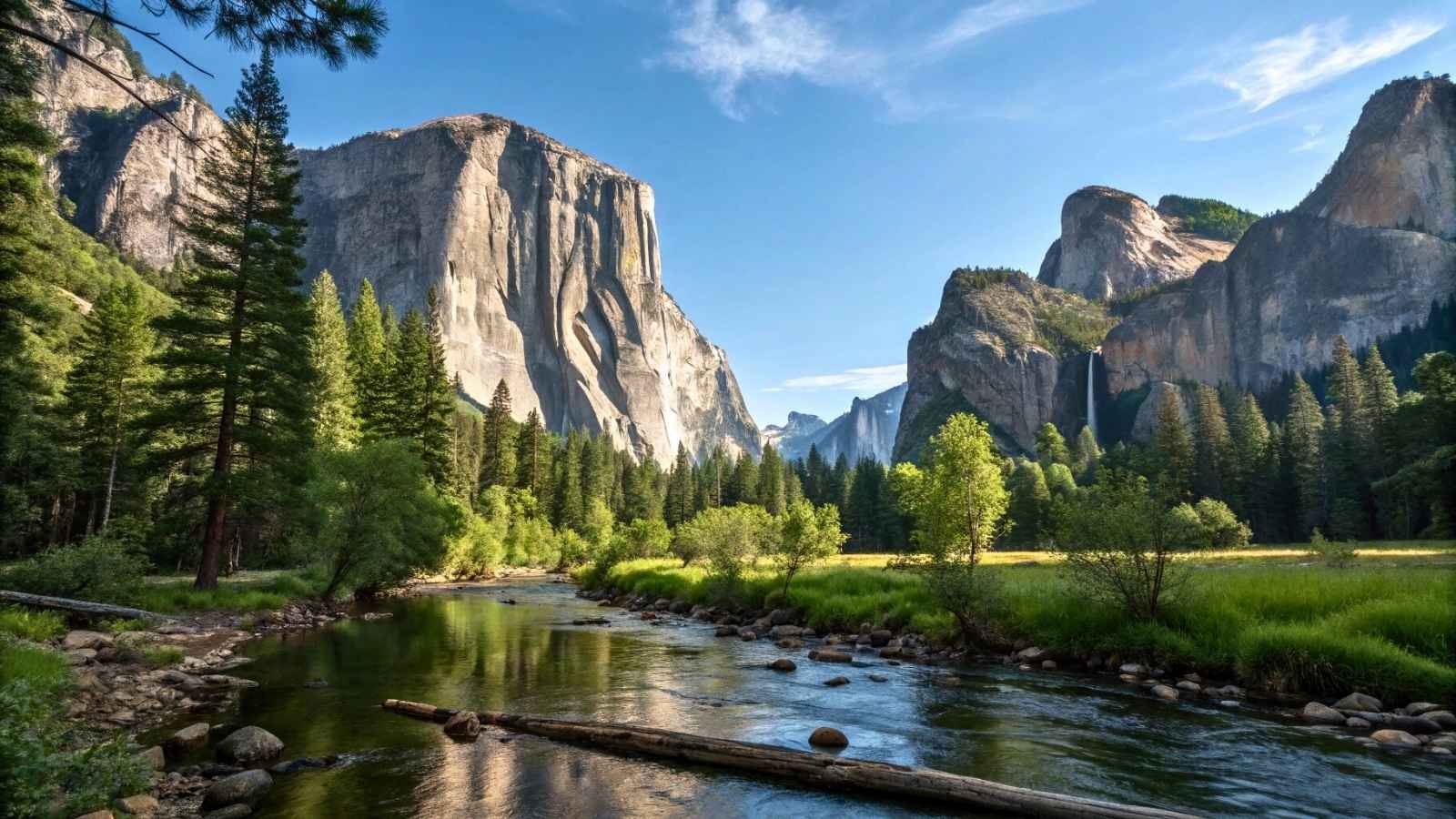
Yosemite is known for its dramatic granite cliffs and thunderous waterfalls, but not all its iconic views require an uphill climb. The western section of the Yosemite Valley Loop Trail is a hidden gem for those seeking accessible adventure. This relatively flat, paved path offers sweeping views of El Capitan, Bridalveil Fall, and the serene Merced River.
The loop trail is peaceful and shaded in many areas, making it comfortable even on warmer days. There’s something timeless about watching climbers scale El Cap from the meadow below, or catching the mist rising from Bridalveil Fall after a spring melt. You’re surrounded by postcard scenes, yet it never feels overrun. The accessible sections are wide enough for wheelchairs and smooth enough for strollers, allowing the whole family to take in the grandeur without hassle.
What makes this trail extra special is the feeling of immersion. You’re not just looking at Yosemite — you’re walking (or rolling) through it. This path is a gentle reminder that access doesn’t have to mean compromise.
Quick Facts:
- Best Months to Visit: April through June (for waterfalls) or September to avoid peak crowds
- Trail Length: Up to 3 miles of accessible segments
- Surface: Paved and packed dirt in areas; generally flat
- Wheelchair/Stroller Amenities: Designated accessible parking, shuttle service, accessible restrooms
- Nearest Facilities: Yosemite Valley Visitor Center, Yosemite Lodge
3. Clingmans Dome Observation Tower Trail — Great Smoky Mountains National Park, TN/NC
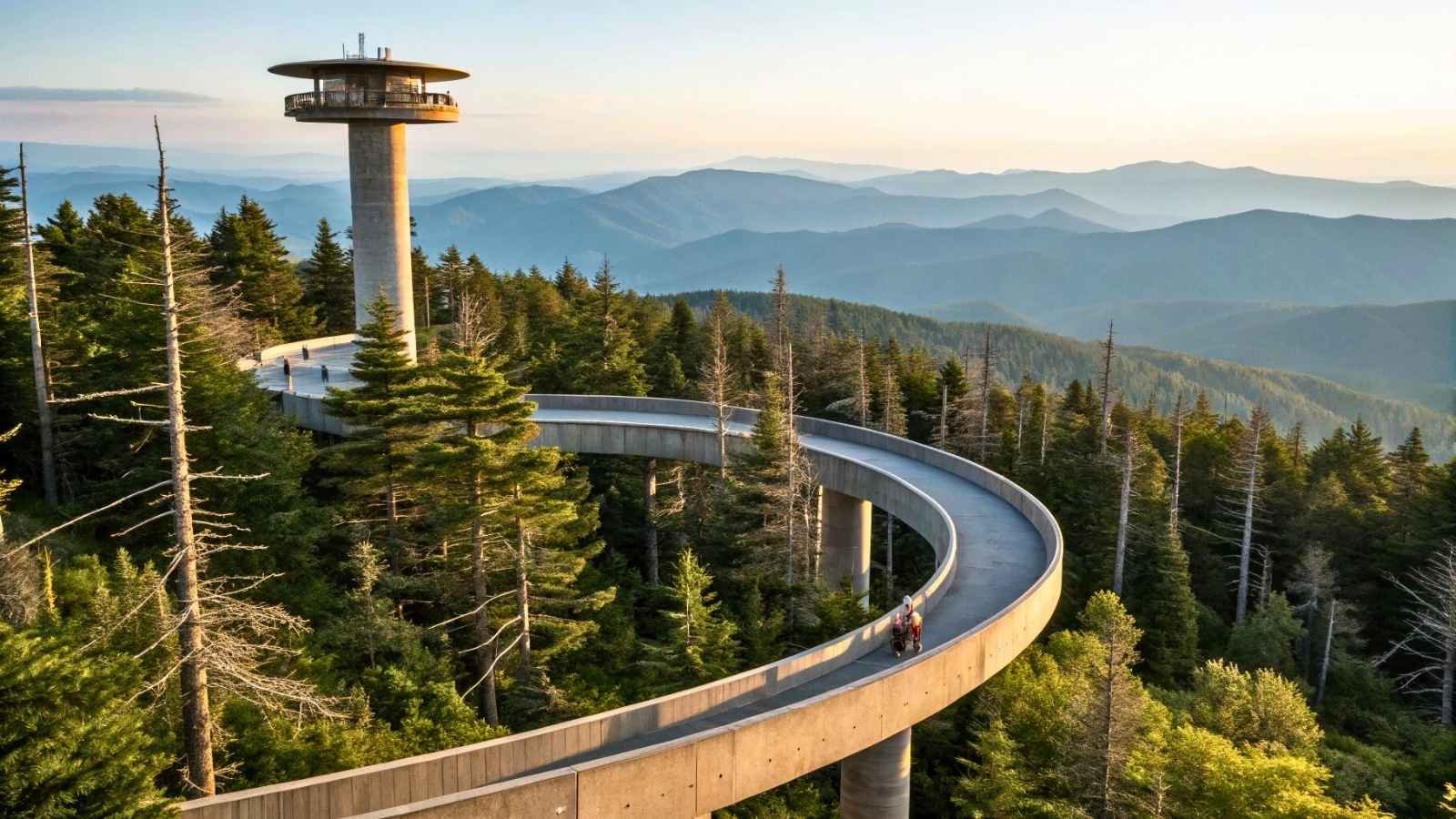
Clingmans Dome is the highest point in the Great Smoky Mountains National Park, and the trail to the observation tower — though steep — is fully paved and technically accessible. At the summit, a spiraling ramp leads to an observation deck offering 360-degree views that stretch across seven states on clear days.
Now, be prepared: the trail is steep, about 0.5 miles each way, and while it’s technically wheelchair accessible, motorized assistance or a strong push partner is recommended. But the reward? Incredible. The layered blue ridges of the Smokies roll off into the distance like soft waves, and the crisp, high-altitude air makes the view feel even more expansive.
Even the drive up to Clingmans Dome feels like an adventure — winding roads, mossy forests, and sudden cloudbursts. Once you’re at the top, there’s a feeling of standing on the roof of the Eastern U.S., where you can see the landscape stretch out endlessly beneath you.
Quick Facts:
- Best Months to Visit: May through October (road to summit closes in winter)
- Trail Length: 1 mile round trip
- Surface: Steep but paved to the tower
- Wheelchair/Stroller Amenities: Paved access, large viewing platform, accessible restrooms at the parking lot
- Nearest Facilities: Clingmans Dome parking area, seasonal information station
4. Rim Trail (Mather Point to Yavapai Point) — Grand Canyon National Park, Arizona
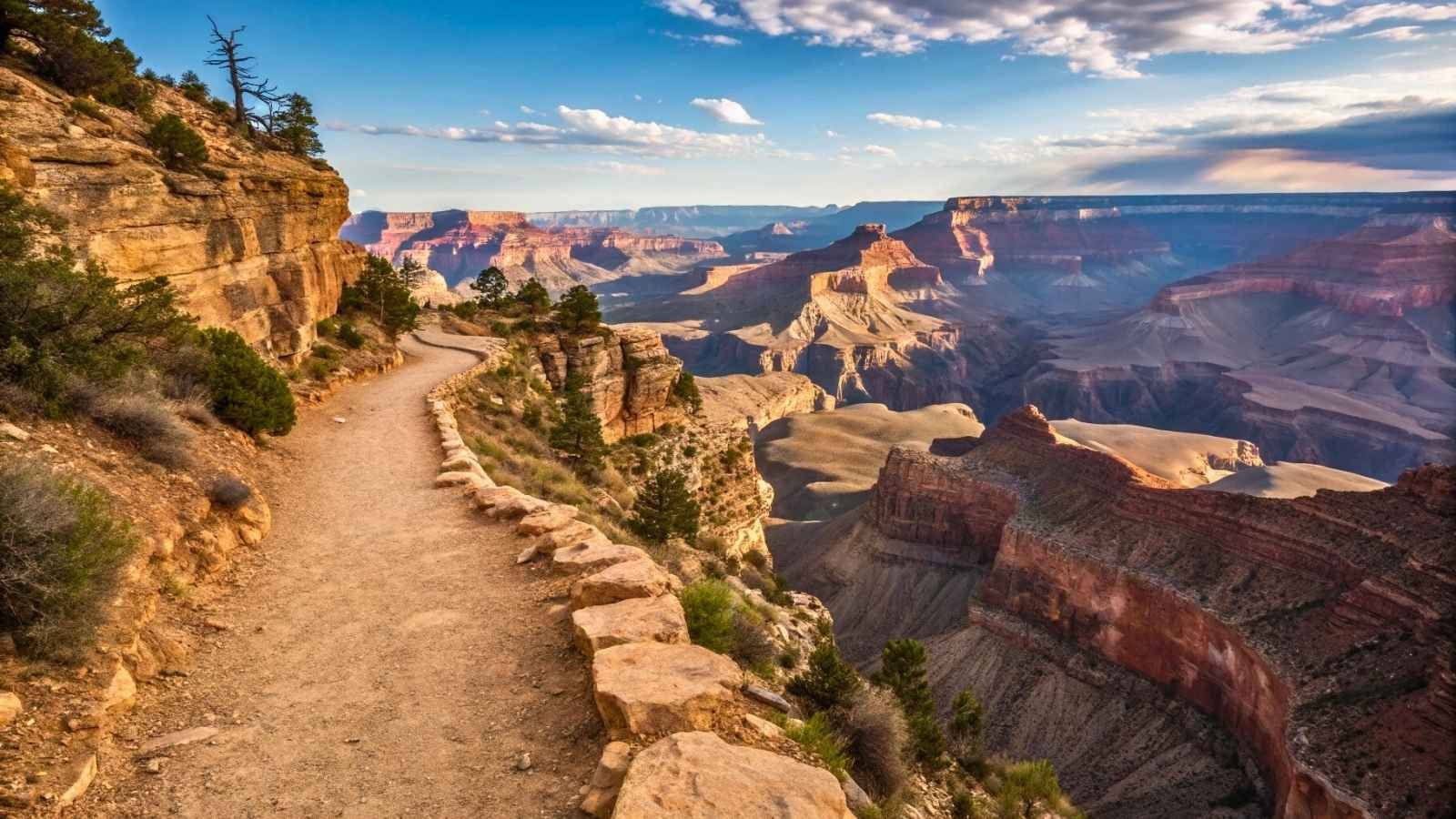
The Grand Canyon Rim Trail is legendary for its views, and the segment between Mather Point and Yavapai Point is one of the most accessible and breathtaking stretches. This portion is paved, relatively flat, and provides uninterrupted views straight into the heart of the canyon.
This is where you’ll truly grasp the canyon’s immensity and color shifts, especially at sunrise or sunset. The accessible overlook at Yavapai Point even comes with a geology museum, perfect for diving deeper into the layers you’re gazing across. Whether you’re stopping for 15 minutes or lingering for hours, there’s no rush here — just vast silence, fresh air, and views that don’t quit.
This section is designed with accessibility in mind, including benches, wide pathways, and several shaded rest areas. It’s a perfect choice for anyone seeking a front-row canyon experience without the rugged terrain.
Quick Facts:
- Best Months to Visit: March to May or September to November
- Trail Length: Approx. 0.7 miles one way
- Surface: Fully paved and mostly flat
- Wheelchair/Stroller Amenities: Shuttle access, accessible restrooms, overlooks with railings
- Nearest Facilities: Yavapai Geology Museum, Grand Canyon Visitor Center
5. Bear Lake Trail — Rocky Mountain National Park, Colorado

Tucked into the heart of the Rockies, Bear Lake is one of the most scenic and accessible alpine lake experiences you can find. The Bear Lake Trail is a 0.6-mile loop, mostly flat and well-paved, that circles a crystal-clear lake reflecting snowy peaks and lush pines.
What’s remarkable here is how remote and wild it feels without being physically demanding. You’ll share the path with chipmunks, wildflowers, and maybe even a moose sighting in the early morning. There are numerous benches along the loop, perfect for resting or simply taking in the quiet majesty of the mountains.
It’s also easily reached by shuttle, with designated accessible parking spots right at the trailhead. If you’ve ever dreamed of breathing in the clean alpine air and gazing out over a still mountain lake, this trail delivers without requiring backcountry grit.
Quick Facts:
- Best Months to Visit: June through September (snow-free conditions)
- Trail Length: 0.6-mile loop
- Surface: Mostly paved and packed gravel
- Wheelchair/Stroller Amenities: Accessible shuttle stop, restrooms, benches
- Nearest Facilities: Bear Lake Trailhead Rest Area, Park & Ride shuttle access
6. Boardwalk Loop Trail — Congaree National Park, South Carolina
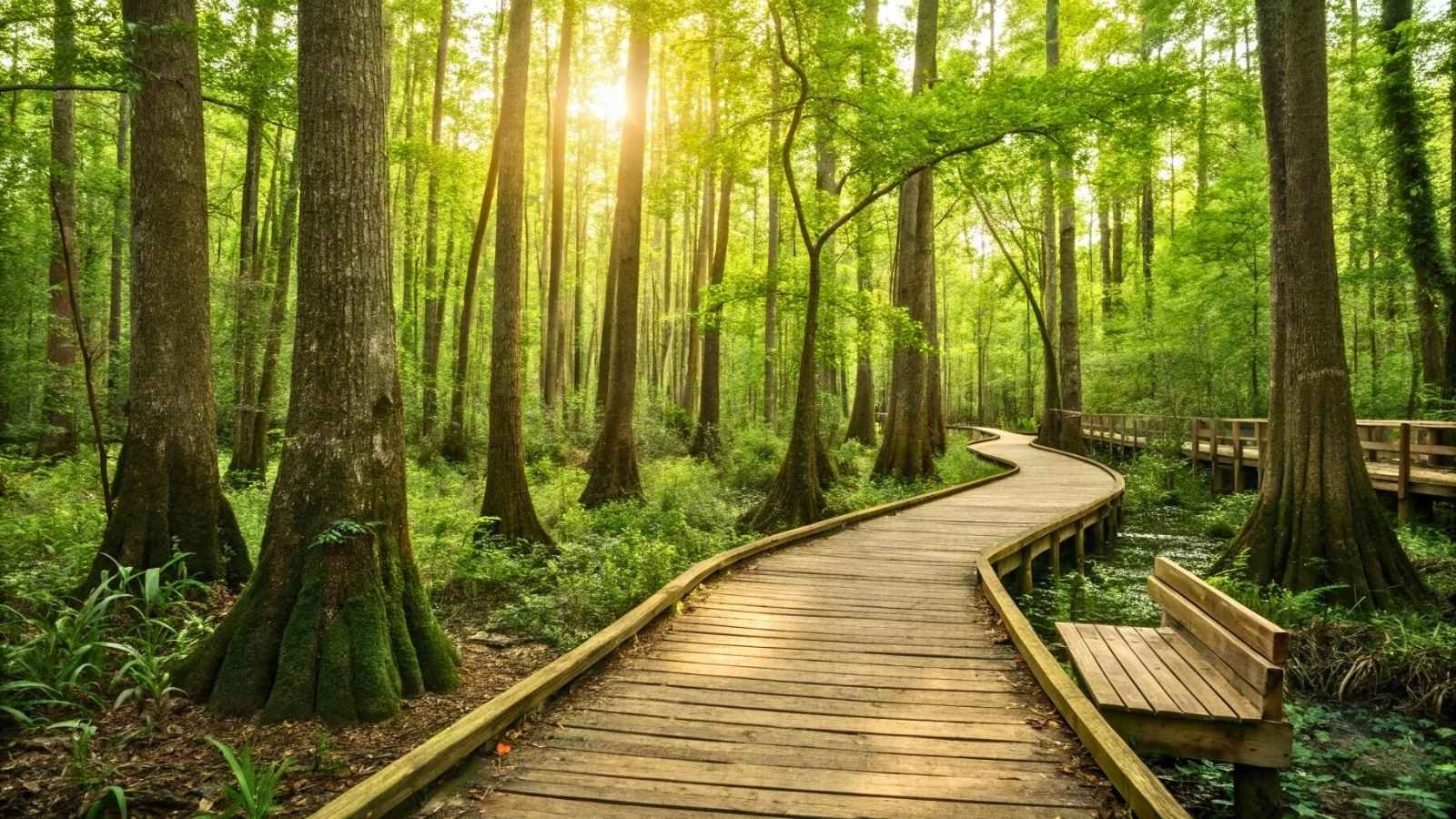
In the heart of South Carolina’s floodplain forest lies one of the most quietly spellbinding trails you’ll ever experience — and you can roll right through it. The Boardwalk Loop Trail at Congaree National Park is a 2.4-mile, fully elevated, wheelchair-accessible wooden walkway that weaves through towering bald cypress, tupelo trees, and lush swampland that feels ancient.
There’s a gentle hum here — the chirping of birds, rustling leaves, the croak of frogs. You’re not gazing at nature from afar; you’re inside it, eye-level with dragonflies, with the shadows of century-old trees stretching across your path. On misty mornings, the whole trail feels ethereal, like stepping into a forest that forgot time.
Despite being deep in a wild, rich ecosystem, this trail is extremely friendly for families and mobility devices. The elevated boardwalk is wide and smooth, with plenty of interpretive signage to help you connect with what you’re seeing, hearing, and smelling.
Quick Facts:
- Best Months to Visit: October to April (bug activity is low; cooler temperatures)
- Trail Length: 2.4-mile loop
- Surface: Elevated wooden boardwalk
- Wheelchair/Stroller Amenities: Designated parking, accessible restrooms, benches, ranger-led accessible walks
- Nearest Facilities: Harry Hampton Visitor Center
7. Lower Yosemite Falls Trail — Yosemite National Park, California
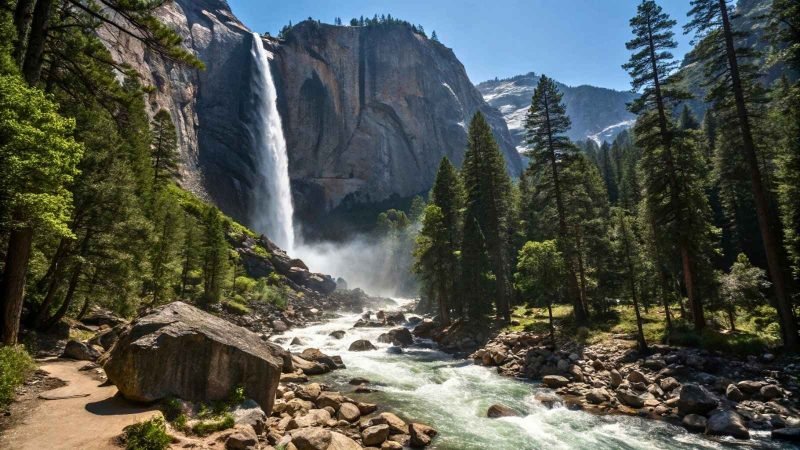
Not all waterfalls require a hike to behold. The Lower Yosemite Falls Trail is a short, powerful, and wildly rewarding experience for visitors of all ages and mobility levels. This 1-mile round-trip paved path leads to the base of North America’s tallest waterfall, and the sound alone is enough to stir something deep.
The trail is wide, flat, and flanked by pines and granite cliffs, but it’s the crescendo of falling water ahead that captures everyone’s focus. Spring and early summer are best for water flow, when the thundering roar echoes off stone and mist dusts your face like a cool breath.
There’s something universal about the appeal of waterfalls — and this one makes no one feel left out. If you’re traveling with grandparents, little ones in strollers, or using a wheelchair yourself, this trail makes you feel included in one of Yosemite’s finest moments.
Quick Facts:
- Best Months to Visit: April to June (peak waterfall season)
- Trail Length: 1 mile round-trip
- Surface: Paved and accessible
- Wheelchair/Stroller Amenities: Accessible parking, viewing area, shuttle stop nearby
- Nearest Facilities: Yosemite Valley Lodge, Yosemite Visitor Center
8. Mesa Arch Trail — Canyonlands National Park, Utah

Short, dramatic, and unforgettable — the Mesa Arch Trail in Canyonlands National Park is a rare mix of effortlessness and epic payoff. This trail is just 0.5 miles round-trip, and while not all parts are fully paved, it is firm and graded enough to be manageable for some wheelchair users and all-terrain strollers (especially with assistance).
At the end of this compact trail, Mesa Arch clings to the cliff’s edge like a stone window, perfectly framing the vast canyon country beyond. Come at sunrise, and you’ll catch the rock glowing orange from the inside out — an effect that photographers chase the world over.
While this trail isn’t as polished as some others on this list, it earns its spot because the payoff-to-effort ratio is off the charts. A little help on the trail goes a long way here, and the view will stay with you long after.
Quick Facts:
- Best Months to Visit: March to May or September to October
- Trail Length: 0.5 miles round-trip
- Surface: Firm dirt and rock; somewhat uneven
- Wheelchair/Stroller Amenities: Partial accessibility (recommend all-terrain or companion assistance)
- Nearest Facilities: Island in the Sky Visitor Center (with accessible bathrooms and exhibits)
9. Big Tree Trail — Sequoia National Park, California
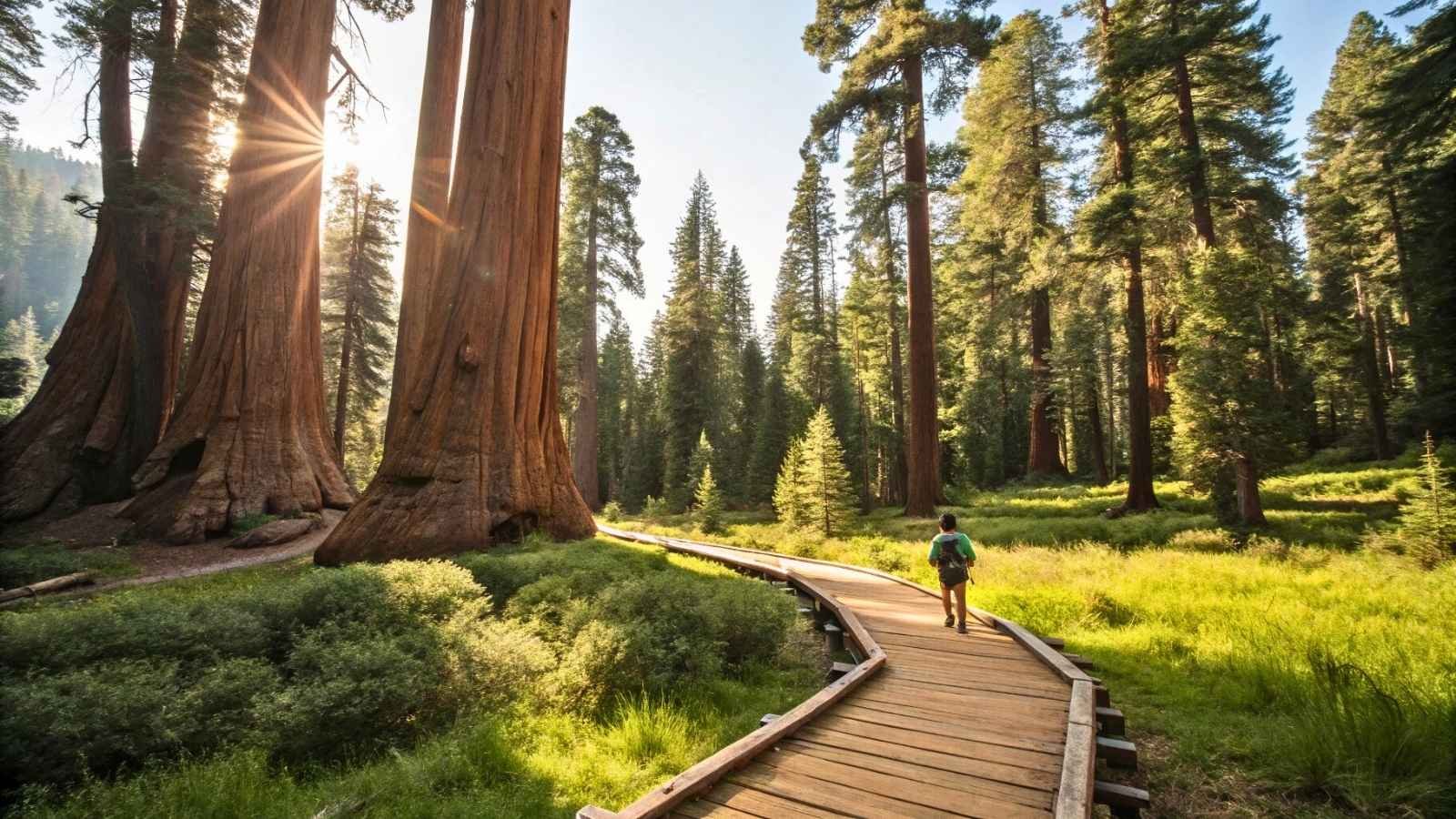
Want to feel tiny in the best way possible? The Big Tree Trail in Sequoia National Park gives you the full redwood experience without demanding a strenuous hike. This easy 0.6-mile loop, with sections fully accessible for wheelchairs and strollers, wraps around Round Meadow and showcases some of the largest trees on Earth.
You’ll pass towering sequoias so wide they defy belief — and yet, the trail remains intimate and peaceful. There are interpretive signs throughout the loop explaining how these giants live, breathe, and outlast wildfires. Benches and flat boardwalks make this a relaxing yet awe-inspiring stroll that welcomes everyone.
The magic here is in the contrast: how slowly the trees grow, how short we stay, and how this little trail offers a direct encounter with timeless natural power — all without leaving the paved path.
Quick Facts:
- Best Months to Visit: June to October
- Trail Length: 0.6-mile loop
- Surface: Combination of paved trail and wooden boardwalk
- Wheelchair/Stroller Amenities: Accessible restrooms, designated parking, benches, interpretive signage
- Nearest Facilities: Giant Forest Museum
10. Ledges Overlook Trail (Accessible Viewpoint) — Cuyahoga Valley National Park, Ohio

Tucked in a lesser-known national park, the Ledges Overlook offers sweeping views over Cuyahoga Valley — and thanks to thoughtful trail design, it’s accessible to most. While the full Ledges Trail is rugged, there’s a dedicated accessible spur that leads to a spectacular overlook framed by golden sandstone cliffs and forested hills.
This short spur trail is paved and level, with a generous viewing platform that welcomes wheelchairs, strollers, and visitors who just want a peaceful place to sit and take it in. In the fall, this spot becomes an explosion of color — deep reds, glowing golds, and that woodsy scent of leaves just starting to drop.
It may not be the biggest or most famous viewpoint, but there’s something grounded and honest about it. A place that proves you don’t have to travel far or high to find a moment of wonder.
Quick Facts:
- Best Months to Visit: September to November (fall foliage) or May to early June
- Trail Length: Short paved spur (~0.2 miles to overlook)
- Surface: Fully paved to the overlook
- Wheelchair/Stroller Amenities: Accessible parking, picnic areas, restrooms nearby
- Nearest Facilities: Virginia Kendall Park shelter area, Happy Days Lodge






